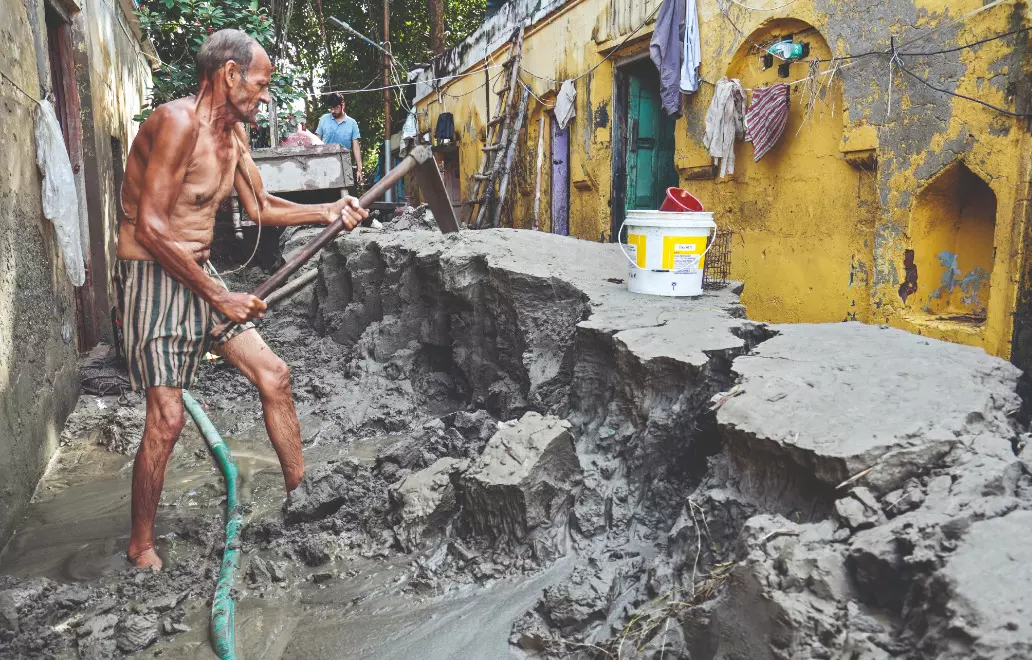
New Delhi, Sept. 8 -- The Yamuna may be slowly flowing back into its banks, but for thousands of families displaced by the recent floods, normal life remains out of reach. The struggle is not just about cleaning homes caked with silt but also about disrupted education, lost livelihoods, and a daily existence inside cramped relief camps.
At a makeshift camp in Yamuna Bazar, 47-year-old daily wage labourer Vinod tries to balance earning a living and rebuilding his home. His six children have been out of school for over a month. "Our children help manage and keep our belongings safe in the relief camps while I and my wife go out to work or clean the mud," he stated.
"They will be able to resume their studies only after we shift back to our home."
For families like his, education has become one of the first casualties of the floods. College attendance, too, has been derailed. With no internet access and no stable shelter, online classes are out of the question, leaving hundreds of young students at risk of losing a critical academic year.
Neelam Devi, 45, from Ghat number 27, pointed out that the immediate concern for parents is survival, not studies. "It is hours of tiresome work to clean so much silt. We don't have money to hire help. Once the mud is out, we still need the house to dry, which depends on the weather," she said. For her family, books and uniforms lie buried under sludge.
Meanwhile, women in the camps say the burden on them has doubled. They juggle household chores in temporary tents with the task of salvaging homes. Mamata, another resident, admitted the process has become overwhelming. "The exhaustion is constant, at the camp, at the house, and in the uncertainty of how long this will last," she said.
Authorities report that water levels have dipped below the danger mark of 205.33 metres, registering at 205.22 metres at the Old Railway Bridge on Monday afternoon.
The Yamuna is expected to decline further, bringing technical relief. Yet, for those in tents along the Delhi-Meerut Expressway, Mori Gate, and Mayur Vihar, the crisis is more about how long they can endure life away from their homes.
Nearly 10,000 people were evacuated last week when the Yamuna breached the danger mark. Most are now packed into temporary shelters, surviving on relief supplies while trying to plan their return.
Adding to the uncertainty is the weather. The India Meteorological Department (IMD) has forecast thunderstorms with rain for Tuesday, which could further slow the drying process.
The capital recorded a maximum temperature of 35.6 degrees Celsius on Monday, with humidity ranging between 87 per cent and 57 per cent, adding to the discomfort of those living in tents.
While the victims are worried that even a short spell of rain could delay the drying of houses, further prolonging their displacement.
Published by HT Digital Content Services with permission from Millennium Post.
